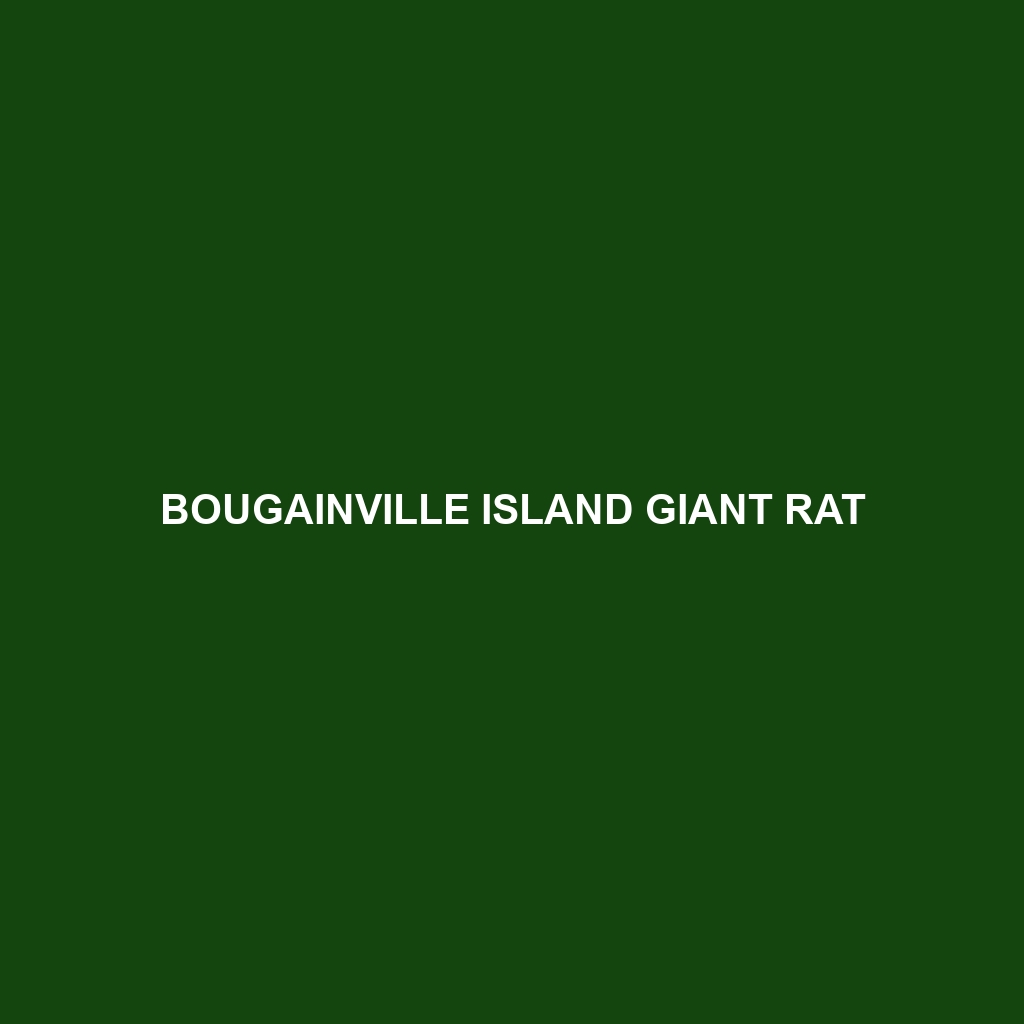Bougainville Island Giant Rat
Common Name: Bougainville Island Giant Rat
Scientific Name: Solomys ponceleti
Habitat
The Bougainville Island Giant Rat is primarily found in the dense tropical forests of Bougainville Island, which is part of Papua New Guinea. These animals thrive in undisturbed rainforests, often residing in hilly and mountainous regions where they can find cover and forage for food. Their preference for humid environments makes them susceptible to habitat degradation caused by deforestation and agricultural expansion.
Physical Characteristics
The Bougainville Island Giant Rat is characterized by its impressive size, growing up to 40 centimeters (16 inches) in length excluding its long tail. It has a robust body covered with coarse brown or grey fur, which provides excellent camouflage in its forest habitat. Its large ears and bright eyes are distinctive features that enhance its sensory perception, aiding in navigation and foraging in low-light conditions.
Behavior
This species is predominantly nocturnal, with peak activity occurring at night. The Bougainville Island Giant Rat exhibits solitary behaviors, although they may come together during mating seasons. These rats are known for their agility, often climbing trees and navigating through dense foliage. Their vocalizations, which include squeaks and chirps, play an important role in communication among individuals.
Diet
The Bougainville Island Giant Rat is primarily herbivorous, with a diet consisting of fruits, seeds, nuts, and roots. It is also known to consume insects and the occasional small invertebrate. These feeding habits not only sustain their energy needs but also contribute to seed dispersal in their ecosystem, making them vital for plant regeneration.
Reproduction
Breeding among Bougainville Island Giant Rats typically occurs once a year, with a gestation period of approximately 3 to 4 weeks. Female rats usually give birth to 2 to 4 offspring in a single litter, which are born blind and helpless. Maternal care is significant, as mothers are known to nurse their young for several weeks, teaching them essential survival skills before they become independent.
Conservation Status
The Bougainville Island Giant Rat is currently classified as endangered due to its limited geographic range and ongoing threats from habitat destruction, introduced predators, and hunting. Conservation efforts are crucial to protect their remaining habitats and ensure the survival of this unique species.
Interesting Facts
One fascinating aspect of the Bougainville Island Giant Rat is its unusual adaptability; despite being primarily terrestrial, it displays excellent climbing skills. Furthermore, these rats are often regarded as an integral part of Bougainville folklore, highlighting their cultural significance in local communities.
Role in Ecosystem
In the ecosystem, the Bougainville Island Giant Rat serves as both a seed disperser and a prey species, thereby contributing to the health of the forest environment. Its diet helps promote plant growth, while it is also a vital food source for larger predators, helping to maintain the balance within its ecological community.
